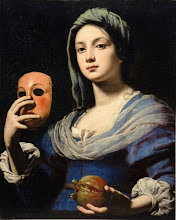The Sahasrara Chakra is the seventh and highest centre of the subtle body, and is located at the crown of the head.
In this antique diagram, it is depicted as a white lotus of many petals. (In yoga texts, the Sahasrara is described as having a thousand petals).
At the centre of the lotus are the feet of the Supreme Being/Self. One is shown white, representing Shri Shiva (the masculine, un-manifest half of the Self), and one red, representing Shri Shakti (the feminine, creative half of the Self).
The trikona, or triangle, may represent the three qualities that pervade the universe: the creative, sustaining and destructive powers, enclosed by the circle of time.
At the centre of the lotus are the feet of the Supreme Being/Self. One is shown white, representing Shri Shiva (the masculine, un-manifest half of the Self), and one red, representing Shri Shakti (the feminine, creative half of the Self).
The trikona, or triangle, may represent the three qualities that pervade the universe: the creative, sustaining and destructive powers, enclosed by the circle of time.
A beautiful image from Indian devotional poetry reveals the crown of the head as a pedestal on which the cool, fragrant, lotus feet of the Divine may rest. In India, the feet of the Divine are considered to pour out blessings and auspicious vibrations, just as in Hindu mythology, the sacred Ganges, source of all sustenance, is said to flow from the feet of Lord Vishnu.
When a person's sahasrara opens, they experience Self-realisation. After this happens, Shri Mataji Nirmala Devi recommends daily meditation with the attention lightly on the sahasrara. Some ancient yoga texts say to put the attention on the brow centre, but these were probably written with the assumption that the aspirant would not yet have had self-realisation - an achievement considered very rare and difficult in previous times. Placing the attention at the crown for meditation, means that the awareness is above the distractions of the mental level, as the lotus of sahasrara blooms above the turbulent or murky waters of the lake of mind, and its petals repel the droplets of thoughts.
When a person's sahasrara opens, they experience Self-realisation. After this happens, Shri Mataji Nirmala Devi recommends daily meditation with the attention lightly on the sahasrara. Some ancient yoga texts say to put the attention on the brow centre, but these were probably written with the assumption that the aspirant would not yet have had self-realisation - an achievement considered very rare and difficult in previous times. Placing the attention at the crown for meditation, means that the awareness is above the distractions of the mental level, as the lotus of sahasrara blooms above the turbulent or murky waters of the lake of mind, and its petals repel the droplets of thoughts.
In Jewish mysticism, the Sephirot centre known as Kether (literally 'crown'), is similar in it's qualities to the Sahasrara of yoga philosophy. Situated at the top of the Tree of Life within the body, it represents pure consciousness and union with the Divine.
The mystical Sufi strain of Islam has a system of subtle centres known as latifas. The highest latifa: Akfha (the 'most subtle') is also located at the crown of the head, and is the point of unity where beatific visions of Allah are directly revealed.
Modern, New Age interpretations often depict the Sahasrara as having a violet or purple colour, but this is not seen in traditional paintings and scriptures. This probably comes from the idea that the colours of the chakras follow the colours of the rainbow, starting with red at the first centre, orange yellow green blue and violet. Traditionally, however, the white colour represents the purity of this centre, and its integration of all the elements and colours. White contains all colours.
Sometimes it is described as a lotus of multicoloured petals, and often depicted as an inverted lotus, with the petals opening downward to release divine nectar and fragrance into the brain.
This South Indian temple is crowned by an inverted sahasrara lotus.





















2 comments:
Beautiful and the most complete explanation of the proper way to understand the crown chakra that I have researched to date. Thank you so much for your contribution. This will help me put my tools to work to create some very personal creative forces. Namaste. Please tell us more.
Thanks Melissa. Wishing you all the best with your creative endeavours. Namaste.
Post a Comment